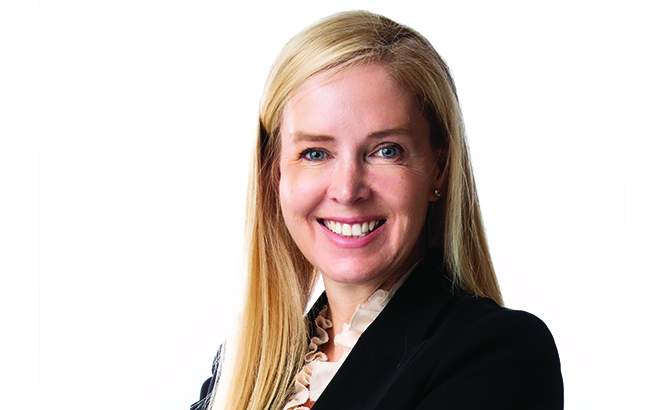As firms grapple with what it means to be global, while also managing intense pressure on costs, the question of whether less profitable international offices are still a justifiable expense is rising up the agenda for many.
This issue has been underlined by the recent news that both A&O Shearman and Hogan Lovells are making cuts to their international presence, with Johannesburg identified by both as a location which is no longer a necessity.
News broke at the start of September that A&O Shearman would be closing its 32-lawyer Johannesburg office, as part of a broader post-merger play that will include a 10% reduction in its global partnership, and the wind-down of its consulting business.
This was followed swiftly by the announcement that Hogan Lovells was to close three offices in Johannesburg, Warsaw and Sydney, marking a complete withdrawal from the Australian market, where it launched in 2015.
‘It’s very competitive at the top end of the top 20 law firms, and the pressure from US firms is getting increasingly intense. Many of the markets these firms traditionally operated in are no longer a priority.’
Duncan Weston, CMS
Hogan Lovells chief executive Miguel Zaldivar said the decision to close the offices had been driven by ‘a strategic review of our geographic footprint to focus on markets with the strongest client demand’, while emphasising key markets like London, New York, California and Texas. He also pointed to a move by the firm to focus on ‘the most complex, high-value work in major markets’, a strategy which helped drive a record-setting 20% hike in profits per equity partner in 2023.
A&O Shearman managing partner Hervé Ekué’s statement struck similar notes, describing the firm’s exit from Johannesburg, where it opened in late 2014, as ‘a difficult but necessary step’.
While the 2010s saw a stream of international firms move into South Africa, including Herbert Smith Freehills, Clyde & Co and Pinsent Masons, firms on the ground now acknowledge that competition for work is tough in what is a ‘saturated’ market.
Sally Hutton, managing partner at leading South African firm Webber Wentzel, which since 2013 has had an alliance with Linklaters, summed up the challenges firms face. ‘The South African legal market is a fairly saturated domestic environment dominated by well-established, full-service corporate law firms, making it challenging for smaller offices of international firms to compete here without a full suite of specialist services.’
The challenge is exacerbated by the pan-African service offered by many local firms, either via alliances or local offices, which enables them to handle work at much lower rates than international entrants – something which ‘further increases the difficulty for firms to compete’, as Hutton explained.
Reflecting on the historical strategies employed by international firms, Hutton noted that many entered the South African market by offering above-market salaries and undercutting prices to capture market share – tactics that have adversely affected profitability: ‘In 2015-16, many international firms entered the South African market with local offices. Now, nearly a decade later, it seems that the inherent challenges they faced are now being highlighted.’
‘There are two possibilities for such firms: either an office, albeit unprofitable, is so small by global standards that it flies under the radar; or alternatively, even a small office that is not sufficiently profitable is regarded as a diversion of management’s attention,’ she explained.
At CMS, which has had a presence in South Africa since 2019, executive partner Duncan Weston placed the withdrawals by A&O and Hogan Lovells in the context of the war for talent. ‘These cutbacks are driven by intense high-level competition. Firms are up against very tough competitors.
‘South Africa is a fairly saturated legal market dominated by well-established, full-service firms, making it challenging for smaller offices of international firms to compete.’
Sally Hutton, Webber Wentzel
‘It’s very competitive at the top end of the top 20 law firms, and the pressure from US firms is getting increasingly intense. Many of the markets these firms traditionally operated in are no longer a priority. Instead, they’re focusing on regions where they can maintain higher profitability,’ he expanded. ‘In markets like Johannesburg, there are strong local law firms, and the global firms likely feel they can rely on these local players when the occasional deal arises, allowing them to narrow their focus.’
While firms like A&O Shearman and Hogan Lovells are pulling back, other international entrants – including Norton Rose Fulbright, DLA Piper, Clydes, and White & Case – remain committed to South Africa. Peter Scott, co-global managing partner at Norton Rose Fulbright, points to the flexibility of their global structure compared to the more rigid models of firms like A&O and Hogan Lovells, which ‘puts certain parts of the business under stress to meet global metrics – one size essentially has to fit all’.
Similarly, Weston described CMS’s approach as more adaptable, allowing the firm to avoid profitability dilution. ‘Our structure allows us to operate in multiple jurisdictions across Latin America and Africa without impacting profitability in places like London.’
While the future for Hogan Lovells’ lawyers in South Africa is still uncertain, A&O’s Johannesburg team has quickly found a new home, with leading African firm Bowmans confirming that the entire group will be joining them in early January 2025, including eight partners and a further six lawyers who are set to join as partners.
In a statement welcoming the hires, Bowmans chair and senior partner Ezra Davids said that the move ‘aligns with our strategic objective of being the go-to African law firm for advising clients on their most complex legal challenges and opportunities across the continent’.
The question of how Bowmans will integrate the former A&O team is one that will be closely watched in the market, with pay alignment a key consideration. ‘The key question now is what internal disruption will occur for firms that absorb their salaried employees without adjusting their remuneration,’ said Hutton. ‘We know that some of them are earning above-market salaries, so it will be interesting to see how firms manage that,’ she explained.
While law firms leaving a market rarely looks like a positive development, for the law firms that remain in the South African market, there will now be opportunities to absorb talent and gain market share. As Weston summed up: ‘I believe we’re in a good position. With two of the biggest international law firms now out of the market, we’ve solidified our standing, and that’s a great place to be.’
In Hutton’s view, one closure is clearly more significant than the other. ‘The closure of the Hogan Lovells office will have little impact on our local legal market. However, the A&O Shearman office was larger, and its closure will have a more significant impact as they were a disruptive competitor – particularly in relation to paying above-market salaries to attract talent. This may help stabilise the market to some extent in terms of remuneration levels.’
And as to whether there will be more closures, Weston is circumspect. ‘We’re seeing more and more firms pulling out of certain markets – US firms have withdrawn from China, and now we’re seeing firms exit Africa, Central Europe, and Australia – regions where, frankly, they’re not seeing significant returns. But I don’t foresee a mass exodus from Johannesburg, at least not from the firms that are already established here.’
Ultimately, in an ideal scenario, the closures create a win-win situation for all firms, as the top-of-the-market firms boost profitability and the firms in the tier below pick up market share.
However, as major players narrow their focus, the question is whether they can sustain their success in an increasingly competitive landscape. As DLA Piper’s Simon Levine noted, while streamlining geographic footprints may improve profitability, ‘the narrower you go, the more you’re fighting over the same small piece of pie.’
This story first appeared on Legal Business.

